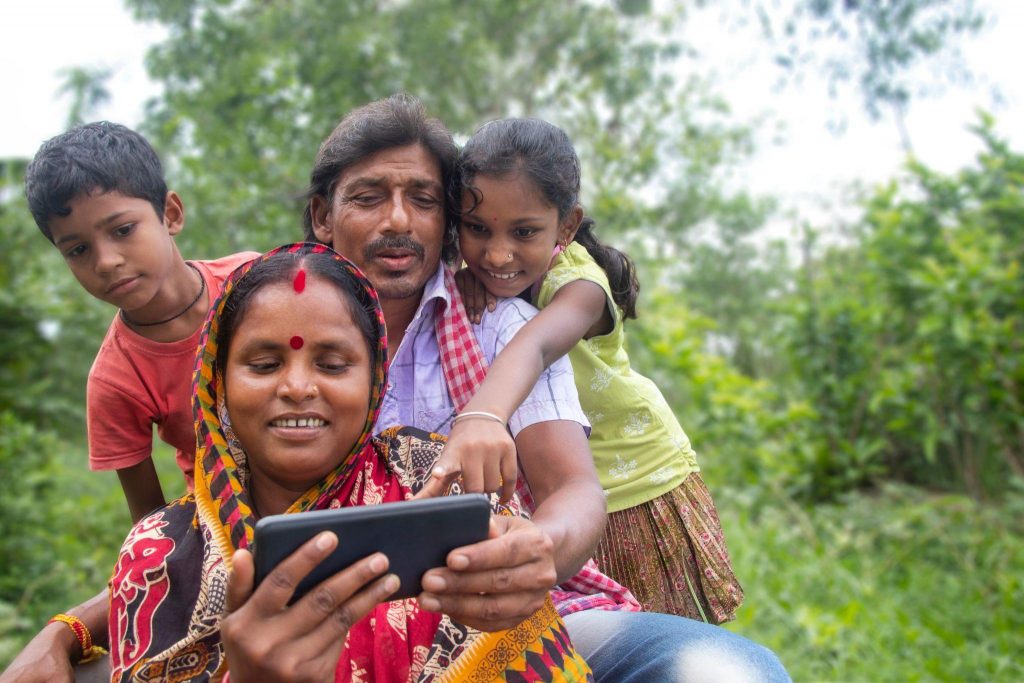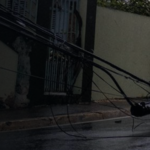The setting sun gave a golden hue across the fields. The sound of chirping birds and rustling leaves filled the air as the day came to a close. Suddenly, the sound of little footsteps cut through the silence. A young girl was running frantically across the field, her hair flying behind her like a flag in the wind. Her eyes were fixed on a small house in the distance, where the glow of a screen flickered through the windows. She didn’t want to miss the latest episode of her favourite show.
The audience of over-the-top (OTT) platforms has grown by double digits in 2022 against the previous year, according to a recent Ormax OTT audience report. A large share of this growth came from rural India and small towns.
Popular shows like Jamtara, Panchayat, Sutliyan, Aashram, Minnal Murali, Paatal Lok, and Kaagaz have brought to prominence stories from the hinterlands of the country. And they have struck a chord with rural dwellers. According to various research, as much as 65% of the consumption of OTT content at present comes from rural India.
And more people from the hinterlands are expected to be added to this audience base.
THE INTERNET GENERATION
In a recent speech, Prime Minister Narendra Modi said that the number of internet users in rural India will strike the number in urban India soon.
According to the latest data from TRAI, the quarterly performance indicator reports published on February 3, 2023, indicate the total number of internet subscribers (as of September 30, 2022) stood at 85.09 crores, while the internet subscribers in rural areas were 34.38 crores.
And these figures are expected to only rise further as more rural areas get access to quality internet.
Driving internet penetration in the hinterlands, however, doesn’t come without its challenges. Rural areas often lack the necessary infrastructure for reliable internet connectivity, such as broadband networks, cell towers, and power supply. This makes it difficult to establish a consistent and fast internet connection, hindering the adoption of internet services in rural areas.
CONNECTING THE UNCONNECTED
There are huge plans that have been drawn up by the central government to drive up connectivity in the villages, where a majority of Indians leave. For instance, schemes like ‘Pradhan Mantri Gramin Digital Saksharta Abhiyan’ (PMGDISHA) target to cover 6 crore rural households (one person per household) for digital literacy in rural India in the coming years.
Steps are being taken to address the digital divide between urban and rural and between the poor and the rest and by when all households in rural areas will reach 42 percent of internet connectivity that urban households have, junior Minister of Electronics and Information Technology Rajeev Chandrasekhar recently told the parliament.
Meanwhile, the demand for good and quick connectivity is only going up in urban areas. With an increasing demand for high-speed Internet, optical fibre networks are increasingly becoming the backbone of digital infrastructure.

Remote learning initiatives are gaining popularity across Indian villages. (Source: Shutterstock/For pictorial representation only)
A major challenge to the country’s connectivity goals is the low number of fibreised towers. Currently, only 35% of the towers in India are fibreised, making it a major hurdle to achieving the dream of inclusivity and getting every nook and corner of the country connected with high-speed Internet. You can only imagine the benefits if more towers were fibreised. Well, the current predicaments are expected to change soon.
THE WIRED DREAM
BharatNet is an ambitious transformative project envisioned by the Indian government to provide high-speed internet connectivity to the rural and remote areas of the country. The project aims to connect over 2.5 lakh gram panchayats in the country with high-speed broadband by utilizing optic fibre and wireless technologies.
Agriculture is the backbone of the Indian economy, and with BharatNet, farmers in rural areas can access real-time information on weather, crop patterns, and market trends. Children living in rural areas can access online educational resources, enabling them to access quality education that was previously available only in urban areas. BharatNet also enables telemedicine, allowing doctors to provide medical consultation and treatment to patients in remote areas. This is particularly useful for people living in areas with poor healthcare infrastructure and limited access to medical services. So, the older population in rural areas will no longer have to travel to distant cities just for a consultation.
INTERWOVEN WITH 5G
Telecom operators and network creators have also announced plans to expand 5G connectivity across the length and breadth of the country.
5G wireless technology will deliver higher data speeds, ultra-low latency, reliability, massive network capacity, increased availability, and a better user experience. Higher performance and improved efficiency will empower experiences (like AR/VR, AI, etc.) and connect new industries. Villagers will soon use these technologies to improve their lives. As things stand, a large number of villagers use their mobiles to access various content available online, including videos, web series, and others.
Meanwhile, telecom operators plan to lay about 2,00,000 cable kilometres and spend between $1.5 Billion to $2.5 Billion on fibre rollout in the next two to three years to create robust networks for rolling out 5G networks across the length and breadth of the country. It will also be the world’s largest rollout of 5G infrastructure.

Lives in rural India are slowly transforming with Internet penetration across the hinterlands. (Source: Shutterstock/For pictorial representation only)
This is where STL comes in. The company’s purpose is to transform billions of lives by connecting the world. Each time when an underprivileged kid gets a fighting chance with digital education, each time when rural communities meet with equal opportunities, this purpose comes to life.
STL is committed to fiberising India with speed and scale, to fulfill the intent to connect the unconnected and to make India’s 5G experience, the very best in the world. As operators push the pedal on launching 5G across the country, STL is working alongside to fiberise towers and cities in India. Since the spectrum auctions in June 2022, STL has won new deals and extensions to current engagements with leading telecom operators in India. These contracts will be focussed on fibre densification to support fast and high-quality 5G rollouts in India.
Significant investments will be made to manufacture high-quality optical fibre indigenously in India, keeping with the government’s vision to promote local manufacturing, in the coming months and years. STL is also a key stakeholder in the government’s Bharatnet project.
Coming back to OTTs, the fantastic shows on these platforms are shining the spotlight on rural India.
The country has diverse and authentic stories in abundance waiting to be discovered and shared with the world, a Netflix spokesperson recently told Outlook Magazine. And for us, it’s really about bringing these stories to life in the most authentic way possible from all corners of the country, reflecting as many lives on screen as possible, the Netflix spokesperson added.
This decade is going to be about equal access and opportunities. Be it in entertainment, e-education, telehealth, or government services, not even a single Indian will be left behind. This is digital’s power, and we are smiling ear to ear as we see it unfold.










